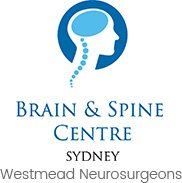Single Photon Emission Computed Tomography Scan
Single-photon emission computerized tomography (SPECT) scan is a nuclear imaging test which uses a radioactive material and a camera to take3D images of internal organs. As opposed to other imaging studies such as X-rays, SPECT scans help examine the functioning of various organs.
SPECT scans are usually performed to detect and evaluate
- Heart problems such as narrowed or clogged arteries, or its pumping efficiency
- Parts of the brain that are affected by disorders such as seizures, dementia, epilepsy, head injuries
- Healing of bone disorders such as fractures or progression of cancer
To perform the SPECT scan, your doctor first injects a very small dose of radioactive tracer into your vein. Once the tracer gets absorbed by your body (15 minutes to several hours) you will lie on a table and be moved into the SPECT scanner, which is a large circular device that rotates around you taking pictures. These are converted into 3D images by a computer for your doctor to evaluate.
After the procedure, you are encouraged to drink plenty of fluids to flush out the radioactive tracer from your body.
The SPECT scan is usually safe but may involve certain risks and complications which include bleeding, swelling and pain in the site of injection, and allergic reaction to the radioactive dye.




